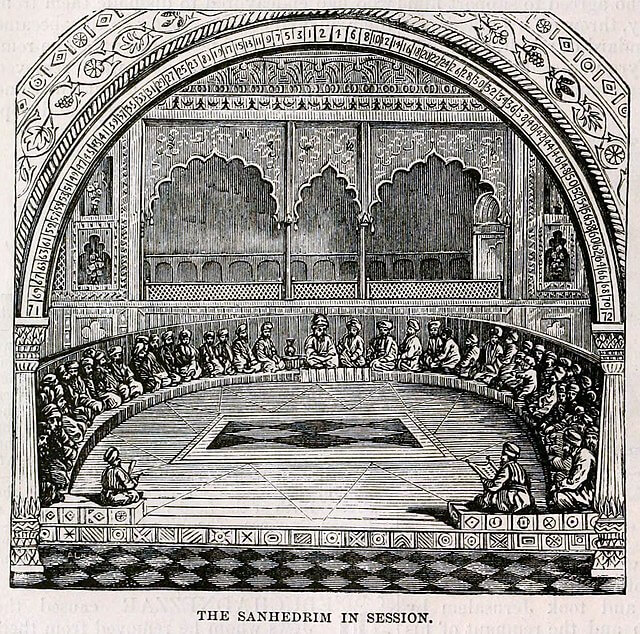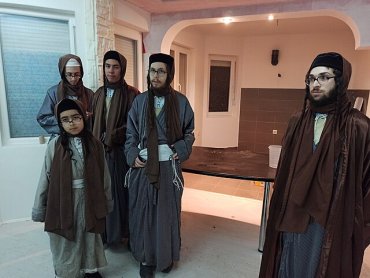
New Pope: How Do Jews Handle Leadership Transitions?
Dear Jew in the City,
With all the recent media attention on the Vatican and the process of selecting a new pope through a conclave, I was wondering—does Judaism have anything remotely similar? Is there a historical or halachic equivalent to locking leaders in a room until a decision is made? How are major religious decisions or leadership transitions handled in our tradition?
Sincerely,
Maya
Dear Maya,
Thanks for your very interesting question. Actually, it’s two questions: (1) Is there a historical or halachic equivalent to locking leaders in a room until a decision is made? and (2) How are major religious decisions or leadership transitions handled in our tradition? Let’s address the second question first.
There are a lot of leadership positions in Judaism, including the king, the Kohein Gadol (High Priest) and the Sanhedrin. We’ll address each one separately.
Following a civil war, there were two Jewish kingdoms, Yehudah (the tribes of Judah, Benjamin and Levi) and Israel (the “Ten Tribes,” i.e., everyone else). Yehudah was the original and the monarchy was basically passed father to son. All of these kings were members of the Davidic dynasty, i.e., descendants of King David by way of his son, King Solomon. (David and Solomon were chosen by God.) The kings of Israel – the breakaway nation of the Ten Tribes – were also generally appointed father to son, except that the kingdom of the Ten Tribes had a fair number of coups and assassinations, so that “royal family” designation changed quite a few times. (The Hasmonean dynasty, which ruled after the Chanukah story, is beyond our scope, but it was also a “family business.”)
Kohein Gadol (High Priest) was also a hereditary position – in a perfect world. If the outgoing Kohein Gadol had a worthy son, that son was appointed to succeed him. In this case, “worthy” means “pious”; the Kohein Gadol had to be a righteous person. Being learned was a plus, but not a prerequisite for the job. A Kohein Gadol was appointed by the Sanhedrin, but if the king appointed someone, the appointment was valid.
Now, the Sanhedrin dates all the way back to the time of Moshe. In Numbers chapter 11, Hashem has Moshe gather 70 elders to assist him in running things; with Moshe, they composed the first “Great Sanhedrin” of 71 elders. (All Jewish courts comprised an odd number of members, to avoid a tie.) The Sanhedrin was self-perpetuating, appointing new members to replace old members as necessary. In addition to piety, humility and a number of other personal traits, a member of the Sanhedrin had to be both a Torah scholar and learned in the scientific disciplines of the time.
The Sanhedrin was like Congress and the Supreme Court combined. It had two heads, the Nasi and the Av Beis Din – basically, the president and vice president, respectively. These were selected by the members themselves. In the Talmud (Brachos 27b-28a), there’s a famous story in which Rabban Gamliel (the Nasi) had a dispute with Rabbi Yehoshua (the Av Beis Din). When the former publicly shamed the latter, the Sanhedrin decided to remove him from office. They then debated who should be the new Nasi. They decided against Rabbi Yehoshua, because he was a disputant in the incident that led to Rabban Gamliel’s dismissal. They also decided against Rabbi Akiva, whom they were afraid wouldn’t be accepted in the role. They ultimately settled on Rabbi Elazar. However, when Rabban Gamliel and Rabbi Yehoshua were reconciled, he was reinstated alongside Rabbi Elazar, and they shared the role.
Nowadays, there are some Hasidic dynasties in which a son is the obvious successor to the father, but generally speaking, Torah leaders achieve their leadership positions simply by proving themselves time and again. An insightful student with good character traits climbs the ladder by repeatedly demonstrating his ability to resolve difficult questions until he is simply recognized as a Torah authority.
Now, as to your first question, we don’t generally resolve issues by sequestering the disputants until they reach a decision, but there’s one famous (actually, infamous) incident where they did just that (Shabbos 13b, et seq.). The students of Beis Hillel and Beis Shammai went to visit the ailing Chananiah ben Chizkiyah ben Garon. While they were there, the students of Beis Shammai realized (a) that they had a quorum and (b) they outnumbered the students of Beis Hillel who were present. They called a session and posted armed guards to keep students of Beis Hillel from leaving, thereby breaking up the quorum. In this way, Beis Shammai was able to force a vote and take advantage of their majority.
Now, while this is generally viewed as a shameful incident, it was procedurally valid. In our society also, we have some procedures that we consider inappropriate when employed by the other side, but that we don’t hesitate to use when necessary – feel free to google “filibuster,” “cloture” and “nuclear option.” Nevertheless, this is seen as a dark day in our history; just because one can do something, that doesn’t mean that he should.
So, like the papal conclave in which cardinals choose the Pope, the Nasi and the Av Beis Din were chosen by the Sanhedrin, but the similarities end there. And no, we don’t generally lock people in a room until they reach a decision.
Sincerely,
Rabbi Jack Abramowitz, JITC Educational Correspondent
Follow Ask Rabbi Jack on YouTube
If you found this content meaningful and want to help further our mission through our Keter, Makom, and Tikun branches, please consider becoming a Change Maker today.







